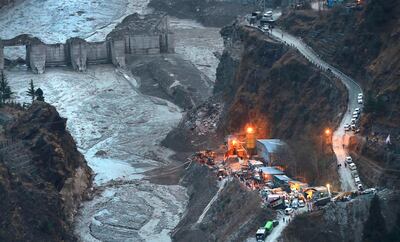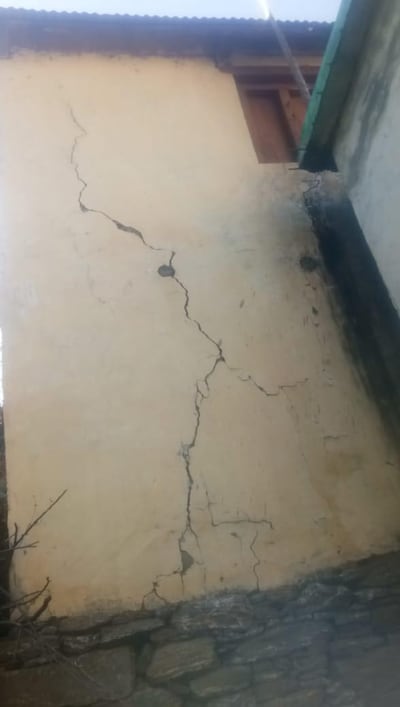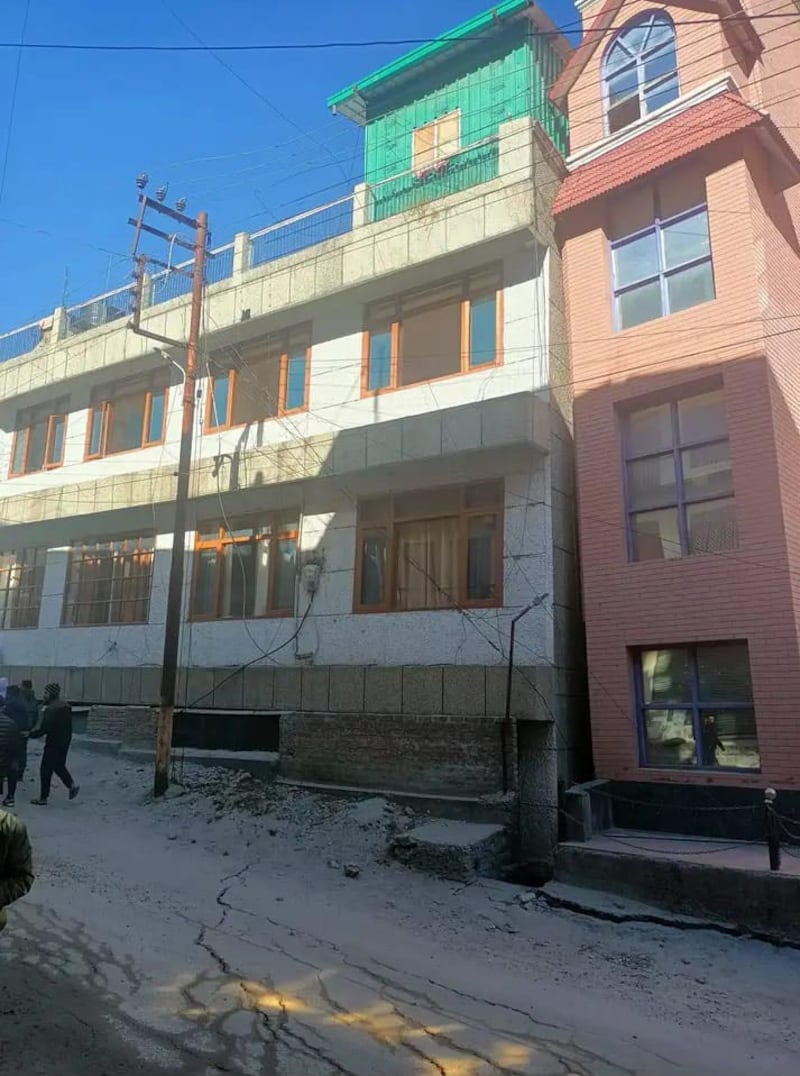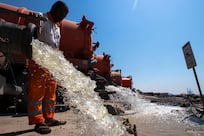For about a month, Harendra Rana has been having sleepless nights.
A big problem has hit the area in India his family have called home for generations.
The land in the environmentally fragile Himalayan region is developing enormous cracks due to movements called subsidence. It happens when large parts of the ground sink.
Buildings, roads and highways in and around the town are also cracking, alarming residents as well as local authorities. The pattern intensified over the past two weeks, officials say.
Mr Rana’s home is one of nearly 600 houses in Joshimath, a town at an altitude of 2,000 metres in the Chamoli district of Uttarakhand state, that have developed fissures over the past year because of the shifting earth.

“These cracks are appearing anywhere and anytime. Large residential buildings, hotels and shops all have cracks,” said Mr Rana, who runs a holiday home business.
"The foundation of the town is shaken. We don’t know what to do, where to go."
His business property has also developed cracks.
"We had gradually recovered from the pandemic but now no tourists are coming. We are on tenterhooks,” he said.
District official Himanshu Khurana told The National authorities had moved at least 60 families in the area to shelters and sent a team of engineers and experts.
“The cracks started almost a year ago but, in the last 10 days, the phenomenon has increased,” he said.
Tourists have been barred from staying in hotels that are damaged and the operation of the ropeway from Joshimath to Auli, a ski resort, has also been stopped.
“As of now 561 structures have cracks and a few have been found to be unfit to live in,” Mr Khurana said.
The state’s Chief Minister Pushkar Singh Dhami held a meeting on Friday to discuss the crisis..
Residents accuses the government of carrying out aggressive infrastructure development in the region at the expense of their safety.
Seismologists have classified the entire state of Uttarakhand as a Zone V — meaning it is highly vulnerable to landslides and earthquakes.
The region experiences deadly landslides, earthquakes and flash floods. In 2013, a flash flood devastated Kedarnath, home to one of the holiest Hindu shrines, and killed more than 5,700 people.
Despite this, the government has launched large infrastructure projects in the area, including the 520MW Tapovan-Vishnugad hydrolectric project and a road network to the border with China.
The federal government is building an all-weather road through the area to bolster pilgrimage routes to Hindu shrines and temples in the state, which draws millions of visitors every year.
Last February a glacier burst caused a deadly flash flood in the region that killed as many as 200 people.

Joshimath is roughly 20 kilometres from the site of that disaster.
Locals blame the construction projects for the disasters.
“The government is blindly making these projects but is little bothered about the lives of the people, said Atul Sati, convenor of the Save Joshimath Committee, a residents' association.
"Is there a need for such big dams and tunnels to create electricity in such a fragile region?” .
“Environmentalists have urged the government to stop such projects but they’re hell-bent on damaging the ecology and our lives,” he said.
Experts have warned repeatedly that rampant infrastructure construction is damaging the ecological balance of the region.
Several studies have highlighted the risks, including a government study in 1976 that warned that road repairs and other construction in the area should not disturb the topography – such as by removing boulders by digging or blasting hillsides – and that the tree cover should be protected.

A 2021 study by independent experts warned that any “further excavation works would sink Joshimath”.
Last year, a government team of experts said the town was “built on an unstable foundation — a thick cover of landslide material — which could give way in case of heavy rain, tremors, unregulated construction or more footfall”.
But construction of the power projects — the state has 500 small and big plants — highways and private construction continue.
Anil Prakash Joshi, the founder of Himalayan Environmental Studies and Conservation Organisation, said that, while not all construction can be stopped, as Joshimath is close to the China border, there should be a limit on infrastructure projects.
“The sinking in the region began a decade ago and has now reached Joshimath. It is a big hillock," Mr Joshi told The National.
"The Himalayas are fragile and aggressive construction is ongoing without much consideration of its bearing capacity."
“I have been repeatedly saying that for any structure we are making above 1,000m altitude in a fragile ecosystem, we have to decide the bearing capacity of the mountain, decide the size and intensity of the construction. The cracks are an example of what will happen if we ignore these things for long,” he said.






